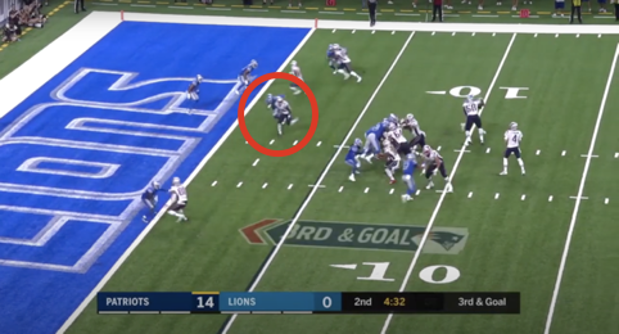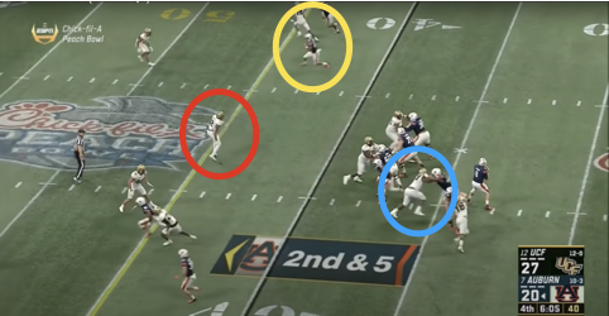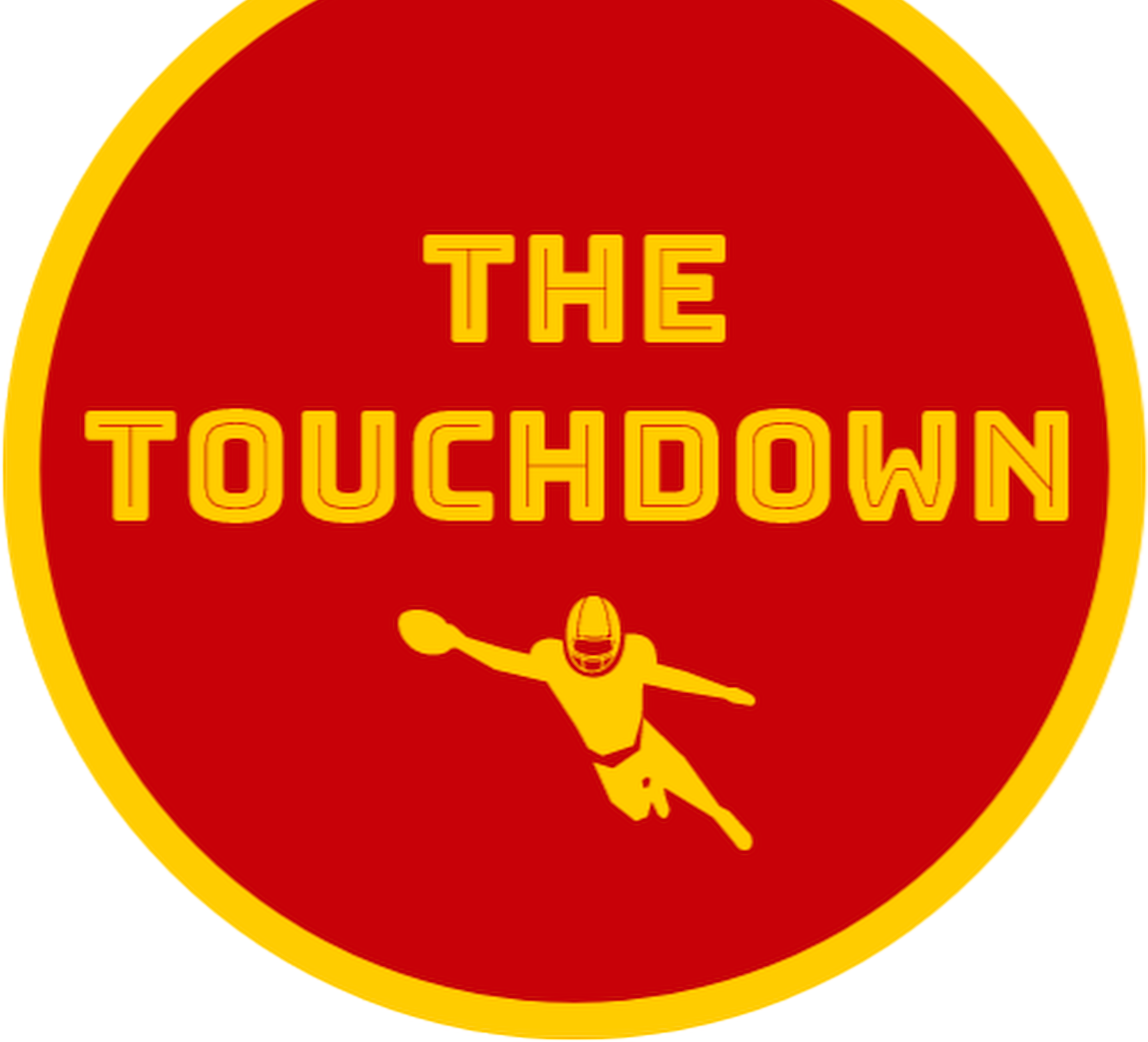What Are the New England Patriots Getting in Jarrett Stidham?
With Jarrett Stidham set to take over the reins at Quarterback for the New England Patriots, there are questions being asked about what he offers them, and if he can fill the void left by Tom Brady. With the reputations of Head Coach Bill Belichick and Offensive Coordinator Josh McDaniels as innovative and insightful schemers about to be tested, Stidham’s strengths will need to be emphasised, with his limitations hidden as much as possible. So how might the Patriots’ Offense look with Stidham under Center?
What are Stidham's Strengths
Stidham's Mobility
It may not be obvious from the stat sheet, but one of Stidham’s best assets when you watch his film is his mobility and ability to run with the football. While at Auburn, Stidham was able to run read-option plays, using his legs to gain several yards on most plays, as well as crucial touchdowns to keep his team in the game, or extend their lead. Stidham also was able to execute bootlegs and rollouts, allowing him to have space and time to find receivers downfield. On the QB read play shown below, you can see Stidham keeps the ball on an option play, with his eyes reading the field, allowing him to run for a TD.
In addition to being able to run to add yards, Stidham is relatively successful when throwing on the run, including at times with his arm at an awkward angle, such as a deep sidearm throw against Alabama in 2018. His pocket movement isn’t exceptional, but he can step up and slide at times, although he will have to improve his pocket presence in the NFL.
However, for the Patriots, being able to move Stidham out of the pocket and opening up space on the field, as well as keeping defenders closer to the line of scrimmage, will open up their playbook in new ways. The versatility Stidham provides in being a capable runner should see New England use their pieces on Offense in multiple ways, helping them disguise their plays and scheme more, similar to how the 49ers’ Offense ran in 2019.
Protecting the Football
Stidham plays a variety of football that can be described as risk-averse. Rather than take shots downfield and risk interceptions, Stidham will check-down and hit receivers on short routes underneath and in the flat. He also throws the ball away a fair amount instead of throwing it up for a contested catch. While some would be critical of this approach, and encourage him to take a few more risks in order to give his receivers a chance to make a play, this philosophy is aligned with New England’s. Additionally, Stidham’s receivers in college frequently dropped passes when they had space or weren’t contested, so giving them 50/50 chances was less favourable than many would expect, hence the risk-averse play.
What others would also be concerned about is the amount of sacks Stidham took. However, he did so to avoid turning the ball over, and he was regularly under pressure. While he needs to get the ball out quicker in his transition to becoming an NFL starter, preventing the other team from getting possession means the Patriots can limit their opponents’ scoring opportunities.
Weapons and Offensive Line
One of the reasons Stidham was sacked so often at Auburn was his offensive line failed to protect him properly. Too often he wasn’t able to set his feet and he had little time to throw, or for receivers to get open. However, in New England, things should be different. While the Patriots are hoping OT Isaiah Wynn can finally see the field for the majority of the season, the rest of their OL is fairly stable and has depth, particularly the interior. With a strong OL, Stidham should have a clean pocket and chances to find open receivers.
On top of that, Stidham also has better receivers at his disposal than he had for his two seasons at Auburn. With the top receivers strong at adding yards running after the catch, especially N’Keal Harry, Julian Edelman and Mohamed Sanu, the Patriots look to have a short-yardage passing attack, taking advantage of whatever positional mismatch they can create. While he will need to develop chemistry with them, he has the benefit of starting this process with last year’s preseason, where he seemed to gel well with WR Jakobi Meyers. Watch the play below, where Stidham passes to Meyers for a TD in a preseason game:
What this play demonstrates is that not only does Stidham get a clean pocket, but he trusts Meyers to make a play on the ball despite having little separation. The screenshot below shows how Meyers is blocking the defensive back from jumping the route, allowing Stidham to put the ball on Meyers’ chest as he crosses the goal line for the TD. At Auburn, Stidham would often not make this throw choosing to instead run or throw to a more open receiver even if they were short of the end zone/first down marker, as the drops by his receivers made them unreliable targets.

Style and Scheme
The video above further demonstates why Stidham will suit the Patriots’ offense. For the Patriots, who had a heavy use of the short passing game in recent years, Stidham will step right in and continue that scheme. In 2017 and 2018, the Auburn offense frequently used screens, curls and slants with few intermediate or deep throws. Stidham regularly threw to his running backs, especially when under pressure, and all of his receivers, including RBs, made plays with RAC yards. New England’s RBs complement this style, with players such as James White among the best receiving backs in the league. Having White, or potentially some development in that area from Sony Michel, as a release valve will further enhance Stidham’s skillset.
Composure
One final strength of Stidham that is worth considering is his composure. While he made some mistakes, and needs to make quicker decisions at times, especially to throw the ball away, he also didn’t shrink away from tough situations or opponents. Playing in the SEC while at Auburn, he faced the top ranked school (Alabama) in both seasons, including a win in the Iron Bowl in 2017 and also against Georgia that season, both of whom would go on to contest the National Championship. Over his two seasons as starter, Stidham also went up against the likes of LSU, Clemson and an undefeated UCF in 2017. Of the losses he had while at Auburn, the majority were by a single score, staying competitive until late in the game.
Evidently, Stidham was not intimidated by the best defenses in college. Even within games, he was able to show resilience and bounce back from mistakes or setbacks. For instance, on one drive against UCF in 2017, Stidham took a big sack deep in his own half instead of throwing the ball away. However, he continued to get the yards back, drive downfield and Auburn scored a field goal on the drive. In many games, Stidham took sacks repeatedly, and yet never showed signs of seeing the proverbial, ‘ghosts,’ which some might see as reckless or lacking awareness, but fits a larger pattern of trying to avoid turning the ball over and not trusting his receivers. With time to develop confidence and trust in his receivers, especially with a strong run game and short passing attack, Stidham can adjust to the NFL and gradually begin opening up the offense downfield.
What about his Weaknesses?
Situational Awareness
Where Stidham does need to drastically develop is his situational awareness. Too often at Auburn on 3rd down, he threw short of the sticks, including to receivers that were covered, giving them little chance to make up the few yards to get the 1st down. In the game against UCF in 2017, despite leading a strong comeback (as mentioned above), Auburn were at one point in field goal range. However, multiple pass attempts led to lost yards, and eventually not only were Auburn out of range, but a fumble by Stidham saw UCF gain possession. From that possession, the Golden Knights scored a TD, which ended up being the winning margin. A 10-point swing meant the Auburn Tigers lost that game as a result of Stidham ironically not being more conservative.
Similarly, in a game against Arkansas in 2018, too often Stidham tried to scramble on 3rd down, instead of looking for an open receiver. Consequently, there were too many missed potential first down conversions. While Auburn won that game convincingly, missed opportunities like that in the NFL will be costly. Stidham needs to recognise the situation his team is in, and learn when to take risks, or at least give his team a chance to extend drives. Finding the balance between avoiding turnovers and maintaining possession through some risk will be a major hurdle before Stidham has success in the NFL.
Pulling the Trigger
On the back of his situational awareness, Stidham also needs better pocket awareness than what he showed in college. Although he had poor protection while at Auburn, and figures to have better protection in New England as outlined above, he still needs to release the ball quicker. Many of the sacks he took at Auburn were after he held the ball for 4 seconds or more – including fumbling the ball on strip sacks by Clemson (2017) and Mississippi State (2018). Even if he has better protection in the NFL, the game is a lot faster at the next level, and his internal clock has to kick in quicker.
Getting the ball out quicker is not just about avoiding sacks and fumbles, but is also about making plays. If a receiver gets open quickly, Stidham has to get the ball to them immediately, especially if the Patriots are going to rely on RAC and a predominantly short passing game. Such an example can be seen in the Meyers’ TD clip above – Stidham gets the ball out once Meyers is in position to make the reception.
However, in the image below, Stidham failed to make a similar decision. As shown below, the receiver outlined with the yellow circle has already got separation, and Stidham is looking in his direction. Instead of winding up and throwing immediately, Stidham holds the ball for another half-second before preparing to throw. In that time, his OL is pushed back into him by the Defensive Lineman circled in blue, causing the pass to go off-target. Simultaneously, the Linebacker circled in red can jump the route and make an interception, especially with Stidham staring down the receiver for over a second before that.

Had Stidham thrown the ball immediately, his receiver would have been open and set up a new set of downs. With the game late in the 4th quarter, and Auburn down by 7, giving up a turnover was immensely costly. Again, situational awareness, trusting his receivers and not being too conservative are defining issues Stidham needs to address.
Accuracy and Ball Placement
The final area Stidham had difficulty with while at college was not being consistent with his accuracy and ball placement, including on short throws. Too often he put the ball in places that made it difficult for his receiver. On short throws, some passes were low and close to the ground even when they didn’t need to be. Again, it comes back to a question of being risk-averse and keeping the ball away from the defender – Stidham needs to accept the risk and try and win, instead of avoid losing.
For instance, in the loss to Mississippi State, on three successive plays inside 15 yards of the end zone, none were passes with chances of scoring a TD. One was too high, the second was thrown away, and the third was short of the end zone. Similar plays were made in other games, such as throwing the ball out of reach on sideline throws. While there were a few cases of giving his receivers a chance, a jump ball on 3rd and 10 against UCF to extend a drive, this is something which needs to happen more often.
In addition to the placement of the ball on short and intermediate throws, Stidham also struggles with his deep accuracy and leading the receiver. Despite dumping off to the RB regularly, Stidham could stand to do a better job passing the ball so they catch it in stride, or aren’t having to adjust for the catch. Likewise for crossing and slant routes, hitting the receiver in stride is part of Stidham’s struggles.
Deep accuracy is harder to develop and achieve, and will come with chemistry and trust in the receiver. On deep passes Stidham was usually overthrowing the receiver, so at the very least he isn’t under throwing and putting the ball in the hands of the defender. But if New England are going to use a short passing game, with lots of running plays, executing on deep throws is going to be crucial. If the Patriots can’t stretch the field, defenses will condense closer to the line of scrimmage, giving up fewer yards on each play.
Ultimately, comparing Stidham to Tom Brady is fruitless – he will never be the same. Stidham’s mobility is a great asset for the Patriots, as is his suitability for their running and passing scheme. While he needs to trust the receivers and be prepared to take shots when they’re there, that will come with time. For now, New England can trust that he won’t turn the ball over a lot, and if they can protect him, he makes the reads he needs to move the ball. Encouraging his instincts, and his processing speed, will take time, but by refining his placement on throws and pulling the trigger more instinctively, there’s every chance Stidham becomes a reliable starter. The team is built for him to succeed, but he also needs to keep improving.
Jim Brown-USA TODAY Sports

